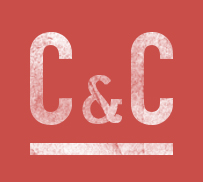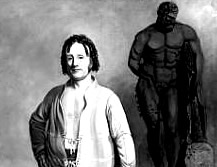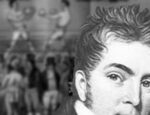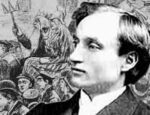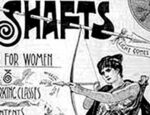Description
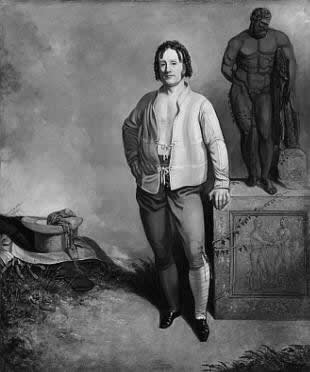 Admire the physique of Abraham Cann, one of the last champions in Devon Wrestling, and compare his achievements with those of the Farnese Hercules. In this painting, by Henry Caunter (c. 1846), Cann is evoked as the last great exponent of the dying art of wrestling according to the brutal Devon rules. These allowed shin-kicking in shoes “soaked in a bullock’s blood and baked in a fire, making them hard as iron.”
Admire the physique of Abraham Cann, one of the last champions in Devon Wrestling, and compare his achievements with those of the Farnese Hercules. In this painting, by Henry Caunter (c. 1846), Cann is evoked as the last great exponent of the dying art of wrestling according to the brutal Devon rules. These allowed shin-kicking in shoes “soaked in a bullock’s blood and baked in a fire, making them hard as iron.”
Cann was the son of a central Devon farmer and malt-producer, who taught all his five sons how to wrestle and shin-kick, Devon-style. The bouts, arranged at taverns, were notoriously rowdy, and attracted notably cross-class audiences including both gentlemen who provided the prize money and labouring men.
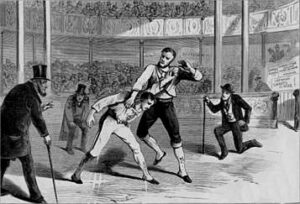
The portrait of Cann, by including the Farnese Hercules in the picture, standing on a base which depicts a classical wrestling match, implicitly equates the ancient local custom with the sporting feats of ancient Greco-Roman heroes. But there is also a specific reference to Cann’s greatest victory when he won the title ‘Champion of the West of England’ in 1826. He defeated an enormous Cornish publican named James Polkinghorne by executing a full-body ‘throw’ to the astonishment of all onlookers. This invited a comparison with Hercules’ victory over the giant wrestler Antaeus, previously invincible, who was rejuvenated by his mother Earth every time he hit the floor. So Hercules held him off the ground for as long as it took for his energy to dissipate completely.
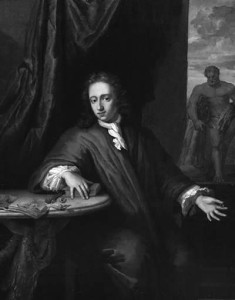 Since it was rescued from the Baths of Caracalla in 1546, the Farnese Hercules has been one of the most widely recognized of all ancient statues. It got its names from its collector, Cardinal Alessandro Farnese, but reproductions soon started to appear in the gardens, courtyards and dining rooms of the rich all over Europe. It is now in the Naples Archaeological Museum. The same statue that could indicate a Devon taverner’s strength could indicate the wealth required to indulge in becoming a dilettante collector of classical artefacts, such as this Dutch goldsmith portrayed by Daniel Haringh in the 17th century.
Since it was rescued from the Baths of Caracalla in 1546, the Farnese Hercules has been one of the most widely recognized of all ancient statues. It got its names from its collector, Cardinal Alessandro Farnese, but reproductions soon started to appear in the gardens, courtyards and dining rooms of the rich all over Europe. It is now in the Naples Archaeological Museum. The same statue that could indicate a Devon taverner’s strength could indicate the wealth required to indulge in becoming a dilettante collector of classical artefacts, such as this Dutch goldsmith portrayed by Daniel Haringh in the 17th century.
